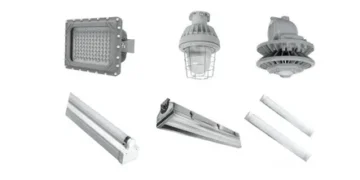In a rapidly urbanizing world, road safety remains a pressing concern for governments, city planners, and communities alike. As the number of vehicles on roads grows, the risk of accidents—often caused by one common factor: speeding—also increases. Despite rigorous traffic rules and awareness campaigns, drivers continue to speed, making it one of the leading causes of fatal road accidents globally. This ongoing issue drives the demand for reliable, automated solutions, leading to the rise of advanced Speed Detection systems that redefine how authorities manage traffic and enforce safety regulations.
These intelligent systems are no longer just tools for penalizing offenders. They are part of a larger framework for enhancing road safety, shaping driver behavior, and enabling data-driven decisions that can transform entire transportation ecosystems. With the integration of modern technologies such as video analytics, AI, and real-time monitoring, Speed Detection systems are playing a pivotal role in reducing road casualties and building safer streets for everyone.
Understanding Speed Detection Systems
Speed Detection systems work by using sensors, cameras, or radar technology to calculate the speed of moving vehicles. The system captures the data either through fixed roadside installations or mobile units deployed in vehicles. When a vehicle exceeds the legal speed limit, the system automatically records the infraction, capturing relevant details such as license plate number, speed, date, time, and location.
Modern systems now do much more than just measure speed. They integrate high-definition imaging and real-time analytics, allowing authorities to detect, analyze, and respond to violations instantly. These systems store footage and data for long-term analysis, helping traffic departments identify trends, high-risk zones, and habitual offenders.
Unlike traditional speed traps that rely on manual enforcement and often suffer from human error or manipulation, automated Speed Detection technology delivers consistent and accurate monitoring. This removes ambiguity and enables objective enforcement, which encourages motorists to drive more responsibly.
The Science Behind Safer Roads
The relationship between vehicle speed and accident severity is well-documented. Higher speeds reduce the time a driver has to react to obstacles or changes in traffic conditions and increase the force of impact during collisions. This means even small reductions in speed can significantly improve safety outcomes. That is why Speed Detection is a crucial component of modern traffic management strategies.
By making drivers aware that their speed is being monitored, these systems promote self-regulation. Studies have shown that the mere presence of Speed Detection devices, such as cameras or display signs, leads to measurable reductions in average driving speed. Over time, this behavioral shift leads to fewer accidents, especially in high-risk areas like intersections, school zones, and pedestrian-heavy districts.
In addition to enforcement, these systems act as preventive tools. Their real-time capabilities allow for alerts and notifications to be sent to nearby patrol units when speeding is detected. This not only deters offenders but also enables immediate intervention before a situation escalates into an accident.
Intelligent Integration with Urban Infrastructure
As cities strive to become smarter and more efficient, more authorities now integrate Speed Detection with broader traffic management systems. These systems often connect to centralized command centers that oversee various aspects of urban mobility, including traffic signals, surveillance cameras, and emergency response units.
For example, in areas with frequent speeding reports, the system automatically triggers traffic calming measures like adaptive signal control, road signage updates, or alert messages to drivers via digital boards. This real-time adaptability proactively prevents accidents rather than merely responding to them after they occur.
Moreover, by collecting historical speed data, city planners and transportation departments can make informed decisions on where to allocate resources. Whether it’s redesigning road layouts, installing better signage, or adjusting speed limits, Speed Detection offers actionable insights that drive smarter urban development.
Enhancing Safety in Sensitive Zones
Certain areas require heightened attention when it comes to speed control. School zones, hospital vicinities, residential neighborhoods, and work zones are particularly vulnerable to the dangers posed by speeding vehicles. In these areas, the margin for error is extremely thin, and the consequences of high-speed driving can be catastrophic.
Speed Detection systems consistently safeguard these sensitive zones with round-the-clock operation. They enforce speed regulations even without law enforcement officers present. With infrared and low-light capabilities, modern systems maintain effectiveness during nighttime and low-visibility conditions, further boosting their reliability.
In many cases, these systems issue immediate warnings or notifications when vehicles breach speed thresholds. Some integrate automated ticketing mechanisms, which improve enforcement efficiency and strongly deter repeat offenders.
Conclusion
Speed Detection systems are no longer optional tools—they are indispensable assets in the global pursuit of safer roads. Their ability to automate enforcement, promote responsible behavior, and provide valuable insights makes them a cornerstone of modern traffic management. As cities continue to grow and mobility evolves, these systems will remain vital in protecting lives, preventing accidents, and shaping a safer driving environment for all.



























